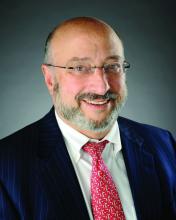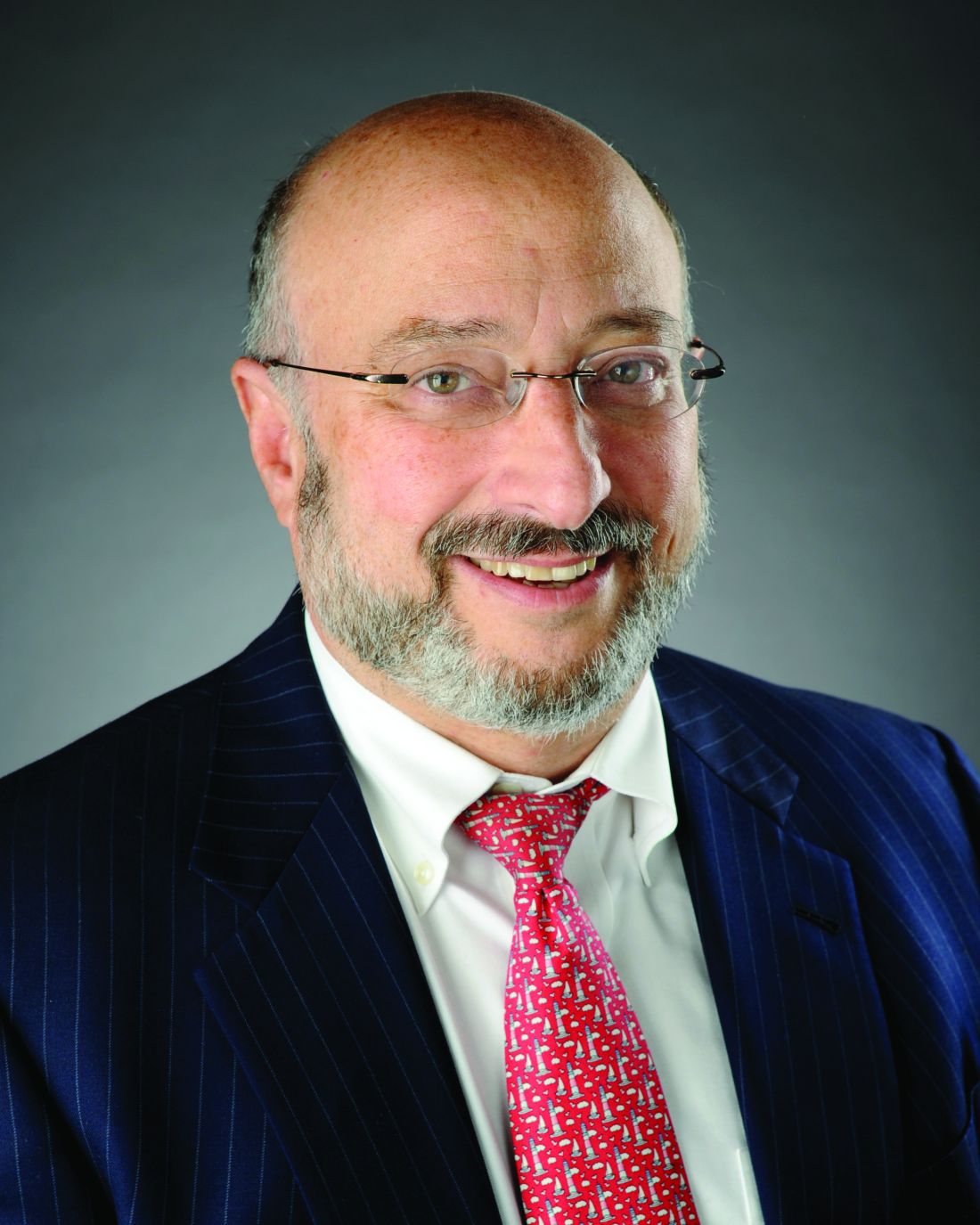User login
Preferred walking speed, for example, may vary by as much as 20% among patients with the same EDSS score. “Even though it is considered a walking scale, your scale defined groups of homogeneous disability are not even homogeneous for quantified measurement of walking ability,” said Mark Gudesblatt, MD, medical director of the Comprehensive MS Care Center at South Shore Neurologic Associates in Patchogue, N.Y. “That’s a problem.”
Dr. Gudesblatt’s study was presented at the virtual meeting of the Consortium of Multiple Sclerosis Centers (CMSC).
John F. Kurtzke, MD, developed the EDSS in 1967. The scale has become a standard outcome of clinical trials, alongside MRI measures and annualized relapse rates. More than 15 therapies for MS have received regulatory approval in part based on their effects on EDSS outcomes. Furthermore, the recently proposed treatment goal of no evidence of disease activity includes the EDSS among its criteria.
Functional ability, however, which the EDSS measures, depends on various factors such as cognitive function, manual dexterity, and ambulation. If the degree of variability of these factors is greater than 20% within groups defined as having similar disability, this scale would no longer be valid, according to Dr. Gudesblatt.
To analyze the variability in functional performance in groups of patients with similar disability, Dr. Gudesblatt and colleagues retrospectively reviewed data from a prospective MS registry. Participants underwent multidimensional computerized cognitive testing and digital gait analysis. They also submitted patient-reported outcomes for hand function while undergoing simultaneous measurements of Patient-Determined Disease Steps (PDDS) or EDSS. For the analysis, Dr. Gudesblatt and colleagues defined groups of “adjacent” EDSS scores as follows: from 0 to 2.5, from 3 to 4.5, from 5 to 6.5, and greater than 7.
In all, 258 patients with MS underwent cognitive testing. Of this group, 73% of patients were women, and mean age was 46 years. The proportion of overlap in multidomain computerized cognitive testing global summary score of 7 domains among patients with adjacent EDSS scores was 65%. The researchers found 42% overlap among patients at the extremes of the EDSS scale. The proportion of overlap in accumulative cognitive impairment (i.e., the number of cognitive domains impaired by greater than one standard deviation) was 72% across adjacent EDSS groups and 38% across extreme EDSS groups.
Among 254 patients with MS who underwent evaluation of walking, 72% were women, and mean age was 46 years. The mean normalized velocity of preferred walking speed varied by more than 20% within EDSS groups and overlapped by more than 20% between groups.
A total of 783 patients underwent evaluation of hand function and tremor. About 74% of these participants were women, and mean age was 49 years. The variability across all PDDS groups (i.e., 0 to 1, 2 to 4, and greater than 4) was greater than 50%. Adjacent PDDS groups had overlap of more than 50%, and the extremes had an overlap of greater than 32%.
“The criteria for the diagnosis [of MS] have undergone multiple revisions, but the scale to define the disability remains unchanged,” said Dr. Gudesblatt. “It’s all about trying to do the right thing for the right patient at the right time for the right reason. We cannot go by our own perceptions. You need to have objective not subjective information to appropriately improve measurements of disease trajectory. The neurologist must move beyond the hammer and tuning fork, must move to objective, quantitative, examiner-independent, multidimensional measures of important aspects of disease to enhance identification of critical disease impact along a continuum so as to improved shared decision making with patient centric objective data to improve outcomes and reduce disability.”
Dr. Gudesblatt has served on speakers bureaus for Acorda, Amgen, Medtronic, and Saol Therapeutics. He has performed contracted research for Biogen, EMD Serono, Novartis, Sanofi, and Teva. The study was conducted without external funding.
SOURCE: Gudesblatt M et al. CMSC 2020. Abstract QOL15.
Preferred walking speed, for example, may vary by as much as 20% among patients with the same EDSS score. “Even though it is considered a walking scale, your scale defined groups of homogeneous disability are not even homogeneous for quantified measurement of walking ability,” said Mark Gudesblatt, MD, medical director of the Comprehensive MS Care Center at South Shore Neurologic Associates in Patchogue, N.Y. “That’s a problem.”
Dr. Gudesblatt’s study was presented at the virtual meeting of the Consortium of Multiple Sclerosis Centers (CMSC).
John F. Kurtzke, MD, developed the EDSS in 1967. The scale has become a standard outcome of clinical trials, alongside MRI measures and annualized relapse rates. More than 15 therapies for MS have received regulatory approval in part based on their effects on EDSS outcomes. Furthermore, the recently proposed treatment goal of no evidence of disease activity includes the EDSS among its criteria.
Functional ability, however, which the EDSS measures, depends on various factors such as cognitive function, manual dexterity, and ambulation. If the degree of variability of these factors is greater than 20% within groups defined as having similar disability, this scale would no longer be valid, according to Dr. Gudesblatt.
To analyze the variability in functional performance in groups of patients with similar disability, Dr. Gudesblatt and colleagues retrospectively reviewed data from a prospective MS registry. Participants underwent multidimensional computerized cognitive testing and digital gait analysis. They also submitted patient-reported outcomes for hand function while undergoing simultaneous measurements of Patient-Determined Disease Steps (PDDS) or EDSS. For the analysis, Dr. Gudesblatt and colleagues defined groups of “adjacent” EDSS scores as follows: from 0 to 2.5, from 3 to 4.5, from 5 to 6.5, and greater than 7.
In all, 258 patients with MS underwent cognitive testing. Of this group, 73% of patients were women, and mean age was 46 years. The proportion of overlap in multidomain computerized cognitive testing global summary score of 7 domains among patients with adjacent EDSS scores was 65%. The researchers found 42% overlap among patients at the extremes of the EDSS scale. The proportion of overlap in accumulative cognitive impairment (i.e., the number of cognitive domains impaired by greater than one standard deviation) was 72% across adjacent EDSS groups and 38% across extreme EDSS groups.
Among 254 patients with MS who underwent evaluation of walking, 72% were women, and mean age was 46 years. The mean normalized velocity of preferred walking speed varied by more than 20% within EDSS groups and overlapped by more than 20% between groups.
A total of 783 patients underwent evaluation of hand function and tremor. About 74% of these participants were women, and mean age was 49 years. The variability across all PDDS groups (i.e., 0 to 1, 2 to 4, and greater than 4) was greater than 50%. Adjacent PDDS groups had overlap of more than 50%, and the extremes had an overlap of greater than 32%.
“The criteria for the diagnosis [of MS] have undergone multiple revisions, but the scale to define the disability remains unchanged,” said Dr. Gudesblatt. “It’s all about trying to do the right thing for the right patient at the right time for the right reason. We cannot go by our own perceptions. You need to have objective not subjective information to appropriately improve measurements of disease trajectory. The neurologist must move beyond the hammer and tuning fork, must move to objective, quantitative, examiner-independent, multidimensional measures of important aspects of disease to enhance identification of critical disease impact along a continuum so as to improved shared decision making with patient centric objective data to improve outcomes and reduce disability.”
Dr. Gudesblatt has served on speakers bureaus for Acorda, Amgen, Medtronic, and Saol Therapeutics. He has performed contracted research for Biogen, EMD Serono, Novartis, Sanofi, and Teva. The study was conducted without external funding.
SOURCE: Gudesblatt M et al. CMSC 2020. Abstract QOL15.
Preferred walking speed, for example, may vary by as much as 20% among patients with the same EDSS score. “Even though it is considered a walking scale, your scale defined groups of homogeneous disability are not even homogeneous for quantified measurement of walking ability,” said Mark Gudesblatt, MD, medical director of the Comprehensive MS Care Center at South Shore Neurologic Associates in Patchogue, N.Y. “That’s a problem.”
Dr. Gudesblatt’s study was presented at the virtual meeting of the Consortium of Multiple Sclerosis Centers (CMSC).
John F. Kurtzke, MD, developed the EDSS in 1967. The scale has become a standard outcome of clinical trials, alongside MRI measures and annualized relapse rates. More than 15 therapies for MS have received regulatory approval in part based on their effects on EDSS outcomes. Furthermore, the recently proposed treatment goal of no evidence of disease activity includes the EDSS among its criteria.
Functional ability, however, which the EDSS measures, depends on various factors such as cognitive function, manual dexterity, and ambulation. If the degree of variability of these factors is greater than 20% within groups defined as having similar disability, this scale would no longer be valid, according to Dr. Gudesblatt.
To analyze the variability in functional performance in groups of patients with similar disability, Dr. Gudesblatt and colleagues retrospectively reviewed data from a prospective MS registry. Participants underwent multidimensional computerized cognitive testing and digital gait analysis. They also submitted patient-reported outcomes for hand function while undergoing simultaneous measurements of Patient-Determined Disease Steps (PDDS) or EDSS. For the analysis, Dr. Gudesblatt and colleagues defined groups of “adjacent” EDSS scores as follows: from 0 to 2.5, from 3 to 4.5, from 5 to 6.5, and greater than 7.
In all, 258 patients with MS underwent cognitive testing. Of this group, 73% of patients were women, and mean age was 46 years. The proportion of overlap in multidomain computerized cognitive testing global summary score of 7 domains among patients with adjacent EDSS scores was 65%. The researchers found 42% overlap among patients at the extremes of the EDSS scale. The proportion of overlap in accumulative cognitive impairment (i.e., the number of cognitive domains impaired by greater than one standard deviation) was 72% across adjacent EDSS groups and 38% across extreme EDSS groups.
Among 254 patients with MS who underwent evaluation of walking, 72% were women, and mean age was 46 years. The mean normalized velocity of preferred walking speed varied by more than 20% within EDSS groups and overlapped by more than 20% between groups.
A total of 783 patients underwent evaluation of hand function and tremor. About 74% of these participants were women, and mean age was 49 years. The variability across all PDDS groups (i.e., 0 to 1, 2 to 4, and greater than 4) was greater than 50%. Adjacent PDDS groups had overlap of more than 50%, and the extremes had an overlap of greater than 32%.
“The criteria for the diagnosis [of MS] have undergone multiple revisions, but the scale to define the disability remains unchanged,” said Dr. Gudesblatt. “It’s all about trying to do the right thing for the right patient at the right time for the right reason. We cannot go by our own perceptions. You need to have objective not subjective information to appropriately improve measurements of disease trajectory. The neurologist must move beyond the hammer and tuning fork, must move to objective, quantitative, examiner-independent, multidimensional measures of important aspects of disease to enhance identification of critical disease impact along a continuum so as to improved shared decision making with patient centric objective data to improve outcomes and reduce disability.”
Dr. Gudesblatt has served on speakers bureaus for Acorda, Amgen, Medtronic, and Saol Therapeutics. He has performed contracted research for Biogen, EMD Serono, Novartis, Sanofi, and Teva. The study was conducted without external funding.
SOURCE: Gudesblatt M et al. CMSC 2020. Abstract QOL15.
FROM CMSC 2020

